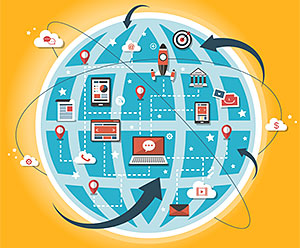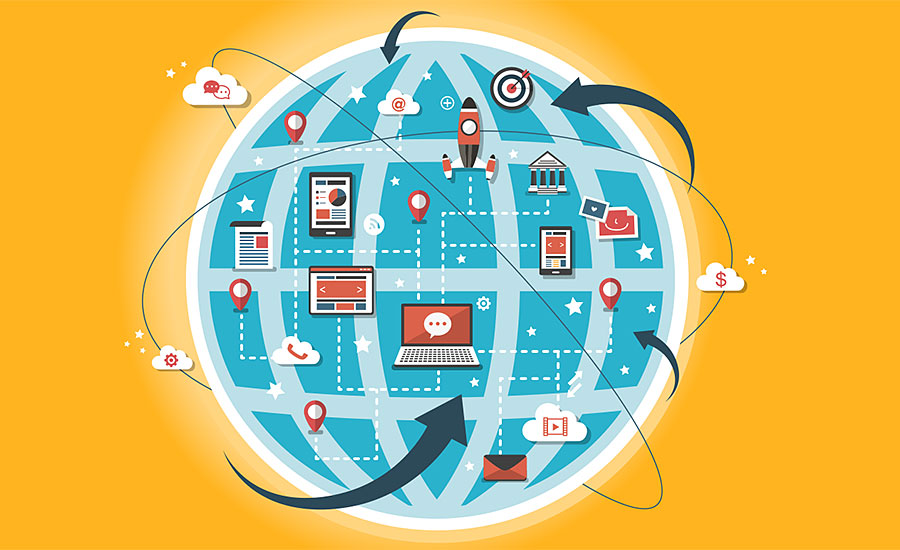 Mark Lee, CCO of Intamac, an IoT enabler with over a decade of experience in the sector, said, “IoT is a relatively new sector, where best practices around things like security are constantly evolving and certainly not widely adopted across the industry.
Mark Lee, CCO of Intamac, an IoT enabler with over a decade of experience in the sector, said, “IoT is a relatively new sector, where best practices around things like security are constantly evolving and certainly not widely adopted across the industry.
“This means manufacturers have to be extremely careful when developing their IoT strategy and selecting an IoT technology partner. Asking important questions about security, reliability, and customer experience from the beginning is essential in order to avoid potentially disastrous consequences in the future.
“A classic example is consumer products being shipped with ‘username’ and ‘password’ as the default login settings. In most cases the user won’t change these, either because they aren’t aware or because the product doesn’t prompt them to do so. As a result, the user is automatically vulnerable to attack and it is from small errors like these that the IoT’s ‘insecure and hackable’ reputation was born.”
While Lee does acknowledge this reputation, he says that in Intamac’s experience, by rigorously scrutinizing your strategy and solution architecture, manufacturers are able to successfully develop and bring exciting new connected products and services to market. Lee offers his top 10 tips for manufacturers:
1. Value proposition — Have you considered what the added value of connecting your products is, and is it meaningful? The IoT industry is littered with examples of gimmicky products, with tenuous business cases. The usual rules apply: ‘Does connecting the product solve a real problem it didn’t solve before it was connected or add value in some other way?’ If you are increasing productivity, adding useful functionality, reducing maintenance and repair costs, or providing something people don’t already have, then chances are that you will have a solid business case and a viable connected product.
2. Security — Remember it is your company’s brand reputation that will suffer if there are problems with security, personal data breaches, or similar, not the reputation of your IoT technology provider.
Contract provisions to penalize the supplier are possible but this is unlikely to fully offset the damage to your brand reputation. As a result, you need to know that the technology and your provider has a quality reputation within the industry, and uses best practices such as encryption and locking down communication to minimize the risk of a security breach to the greatest extent possible.
3. Data — By 2016, 53 percent of manufacturers will offer smart products, but the biggest game-changer for these companies will arguably not come from the added product value, but from the data created by the end-user.
Companies considering an IoT strategy must ensure this information is collected and used to discover deep and meaningful insights into the end-user, their behaviors, and how they use the product, to drive product development.
4. Business Model — Implementing IoT technologies also creates the opportunity to modify your current business model to incorporate services with a regular revenue stream, or potentially new markets, products, or partnership opportunities for extra value services. Make sure you have considered all the options and have the technology in place to do so before you launch your product.
5. Scalability — While you might not need a cloud infrastructure resilient enough to cope with millions of users now, it is possible that you will in the future. How easy will it be to scale your cloud and will it still be cost effective?
These questions need to be addressed from the beginning to ensure a complete rebuild is not required at a later date.
6. Reliability — It is important that your connected products work as reliably as your unconnected products.
This isn’t only about risk of reputational damage. Depending on what the connected product is, the consequences of poor reliability could be serious (for example, a remotely controllable lock that you are unable to unlock).
Ensure you have a reliability feedback loop to confirm a product has acted upon a message when it has received it. Without this you have no way of knowing if your command (unlock/lock, etc.) has been received and acted upon. The technology in your product has to work every single time without exception.
7. User install — When a consumer buys a new product they want it up and running as soon as possible, and while it may be easy to create something that technically works at proof of concept or lab stage, it can be painful for the user to set up and use in the real world if the right design steps aren’t taken. Make sure you do thorough trials of your product before launch and be open to the feedback you receive.
8. User experience — We live in a world where there ‘has to be an app for that.’ Consumers want to control their technology from their smartphones and expect this functionality.
However, consumers will judge you on the user experience of the app, rather than the technology itself. Have you considered building an app? And, if so, which functions would be of value to include on it?
Make sure the user experience is clean and simple to ensure easy usability.
9. No Internet? — People often ask what happens to IoT when there is no Internet, and it can be extremely inconvenient if simple things like turning your lights on and off won’t work because your Internet is down.
This issue is pronounced in IoT security systems, when the house can effectively be blind without the Internet. You need to ensure architecture is in place to prevent these issues.
For example, Intamac’s technology features ‘distributed intelligence’ which means its partners’ products are resilient to loss of Internet connectivity, allowing them to function autonomously.
10. Data efficiency — A significant part of the rationale for connecting products is to collect and analyze data, such as diagnostics, usage, or performance.
It is easy to take the view ‘we will collect as much data as we can and crunch it in the cloud’, but it is important to consider the cost and other ramifications of this approach, both for the user and you.
Remember, the more data you collect, the greater the cost. It is important therefore to have an efficient data management system in place, so that only useful data is collected and that this process is intelligent and optimized.
Lee concluded, “The most important thing to remember is to choose your IoT technology partner carefully, and then plan, test, and refine your connected product for as long as is required before you bring it to market, as it is your reputation that is on the line if something goes wrong.
“Having said that, this industry is moving quickly, and manufacturers need to take this opportunity seriously. To be left behind could be highly costly to a manufacturer at this exciting and revolutionary time for the industry.”
Content for the European Spotlight is provided courtesy of Refrigeration and Air Conditioning Magazine, London. For more information, visit www.racplus.com.
Publication date: 7/6/2015



Report Abusive Comment